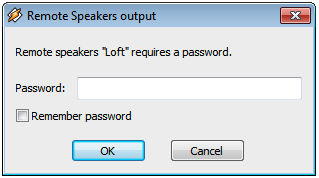

- #Remote speakers output keygen install#
- #Remote speakers output keygen drivers#
- #Remote speakers output keygen Patch#
- #Remote speakers output keygen software#
Lower is less latency, but the setting in this script gives 2.67 ms latency, which is nicely low without putting too much stress on the particular hardware this example was built for. 2 is right for motherboard, PCI, PCI-X, etc.
#Remote speakers output keygen software#
The higher you go, the lower your latency, but the better your card and your CPU have to be, and software has to support this as well. Some cards only do 44100, many will go much higher. Happens to work very well with this card. Most ALSA tutorials and default configurations use card numbers, but this can get confusing when external MIDI devices are in use names make it easier. One can find the names with cat /proc/asound/cards. Sets JACK to use ALSA-compatible sound card named HD2. Starts JACK if it is not already started. When discovering your own best configuration, it is helpful to do trial and error using QjackCtl's GUI with a non-D-Bus JACK2 version.ĭetails of the shell-based example setup jack_control start The above will start a working JACK instance which other programs can then utilize. For the a2j_control commands you also need a2jmidid installed (see #MIDI for more information).Ĭreate a shell script that can be executed at X login:
#Remote speakers output keygen install#
Note that you must install the jack2-dbus package to use jack_control. jack_control makes it easy to start and configure JACK2 via a shell script. JACK2 can be directly launched with the jackd executable, or controlled with the D-Bus-based jack_control binary. Reason: This section is missing proper shell prompts (Discuss in Talk:JACK Audio Connection Kit) However, linux-rt AUR in the AUR is a patched kernel that has some extra patches that can help to get lower latencies. The mainline Linux kernel now supports realtime scheduling, so using a patched kernel is no longer necessary. Your sound card and CPU will heavily affect how low of latency you can achieve when using JACK. The right configuration for your hardware and application needs depends on several factors. || studio-controls-git AUR Basic Configuration Overview Studio-Controls - A JACK audio setup utility with USB device and PulseAudio bridges.


QjackCtl - Simple Qt application to control the JACK sound server daemon.
#Remote speakers output keygen Patch#
#Remote speakers output keygen drivers#


 0 kommentar(er)
0 kommentar(er)
